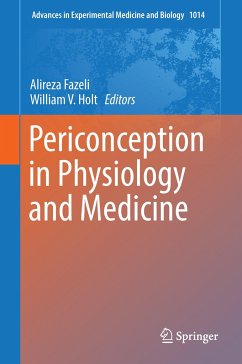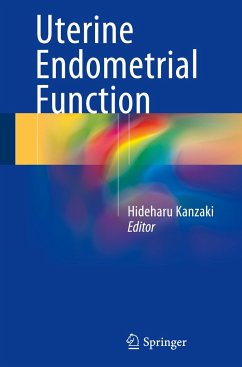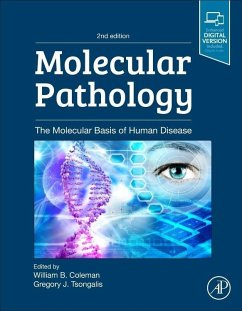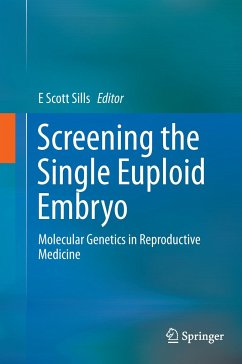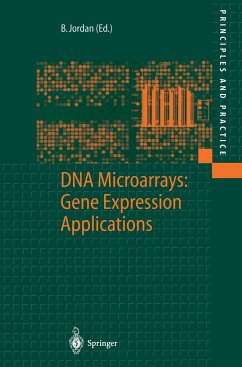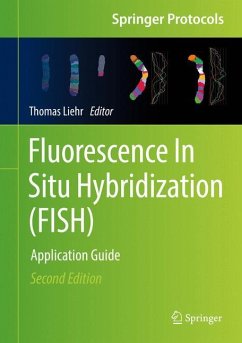
Fluorescence In Situ Hybridization (FISH)
Application Guide
Herausgegeben: Liehr, Thomas
Versandkostenfrei!
Versandfertig in 6-10 Tagen
122,99 €
inkl. MwSt.

PAYBACK Punkte
61 °P sammeln!
This manual offers detailed protocols for fluorescence in situ hybridization (FISH) and comparative genomic hybridization approaches, which have been successfully used to study various aspects of genomic behavior and alterations. Methods using different probe and cell types, tissues and organisms, such as mammalians, fish, amphibians (including lampbrush-chromosomes), insects, plants and microorganisms are described in 57 chapters. In addition to multicolor FISH procedures and special applications such as the characterization of marker chromosomes, breakpoints, cryptic aberrations, nuclear arc...
This manual offers detailed protocols for fluorescence in situ hybridization (FISH) and comparative genomic hybridization approaches, which have been successfully used to study various aspects of genomic behavior and alterations. Methods using different probe and cell types, tissues and organisms, such as mammalians, fish, amphibians (including lampbrush-chromosomes), insects, plants and microorganisms are described in 57 chapters. In addition to multicolor FISH procedures and special applications such as the characterization of marker chromosomes, breakpoints, cryptic aberrations, nuclear architectures and epigenetic changes, as well as comparative genomic hybridization studies, this 2nd edition describes how FISH can be combined with other techniques. The latter include immunostaining, electron microscopy, single cell electrophoresis and microdissection.
This well-received application guide provides essential protocols for beginning FISHers and FISH experts alike working inthe fields of human genetics, microbiology, animal and plant sciences.
This well-received application guide provides essential protocols for beginning FISHers and FISH experts alike working inthe fields of human genetics, microbiology, animal and plant sciences.






